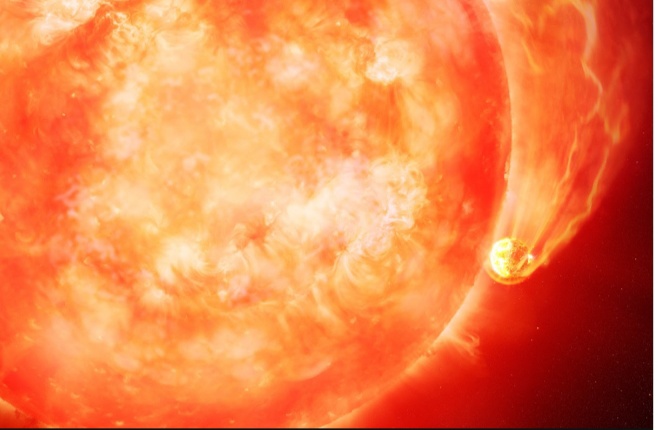Would you also like to witness this rare astronomical event?
A few days ago, a similar news was given about Betelgeuse, but it is not Betelgeuse but Beles 1.
A giant star is taking its last breaths. Maybe we can witness this dying star. This will be a rare astronomical event. Everyone would like to see this event. However, it has started throwing millions of times more light than the sun. Scientists say that for the first time they are able to see a dying star in real time. Because of which this scene has become special. The eyes of astrologers are fixed on this incomparably bright star. The name of this star is Bells 1, which is making the last journey of its life in the triangular galaxy Messier 33.
Nothing is permanent in the universe. One who has come has to go one day. Even the stars who illuminate the world have to say goodbye to this world. The life of the Bells 1 star has also reached its end. Its life is limited to 10 million years only. Anytime now it can turn into a supernova with a terrible explosion. According to researcher Olivia Gaunt, a graduate student at Tufts University in Massachusetts, the star is headed for a violent death. Astronomers can see this in real time and this is the first time we are seeing a star dying in real time. It is located in Messier 33, our nearest triangular galaxy. The star is in the midst of transition into a class of highly unstable stars called Wolff–Rayet stars. This star has started showing the last signs of its life. This change has been seen in just a span of four years. Earlier in 2018 it was quiet when it was first seen. Now this star is churning carbon and iron deep within itself through nuclear fusion. Due to which it is easily seen as a spectacular supernova explosion with 25 times the mass of the Sun. According to NASA scientists, Wolf Rayet stars like Bells 1 live fast and their journey to death is difficult. So watching a star evolve is a rare and valuable opportunity for astronomers. Only 200 such stars are known in our Milky Way galaxy, while astronomers expect their number to be between 1,000 and 2,000. But it is not possible to see them due to being covered with dust and gas. Discoverer Olivia Gaunt of the American Astronomical Society
This finding was shared in the 242nd meeting. He said that this astronomical phenomenon is very interesting.
This is the first observation of a Wolf-Rayet star evolving in real time.
Source and photo: Earth Sky

Journalist Space science.
Working with India’s leading news paper.
और अधिक जानें

